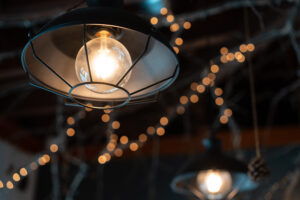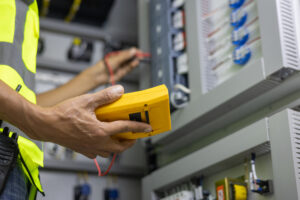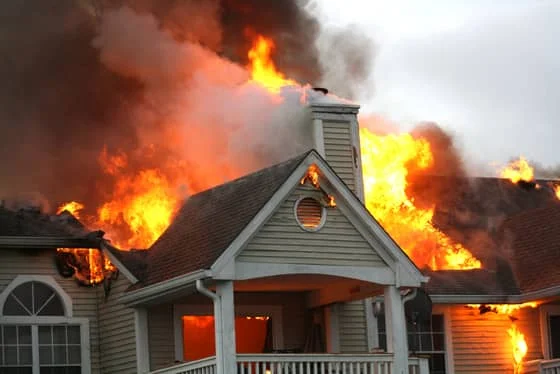Many homes feature fluorescent lights because they are budget-friendly and energy-efficient. However, the flicker of these lights can spark concern about safety. Homeowners may wonder, “Can a flickering fluorescent light cause a fire?” This article aims to discuss the dangers of flickering fluorescent lights and provide safety measures to protect your home from electrical hazards.
Can a Flickering Fluorescent Light Cause a Fire?
Causes of Flickering

- Bulb Age: Over time, fluorescent bulbs degrade, leading to inconsistent light output.
- Faulty Starter: Flickering can often be traced back to a defective starter that is meant to provide the initial power burst to light the lamp. Regular checks on your starter can prevent such annoying disruptions.
- Poor Connections: Unstable wiring or connections can occasionally interfere with the electricity, resulting in flickering.
The ballast, a component that regulates current to the lamp, also plays a significant role in light stability. A worn or failing ballast can lead to persistent flickering.
Potential Risks Associated with Flickering
One major worry with flickering fluorescent lights is the possible danger of an electrical malfunction. Fluctuating light could indicate problems such as overheating, which, if ignored, could lead to a fire risk.
A continuous flicker might be the precursor to more significant issues, including electrical circuit failure. The increased electrical resistance from poor connections or an outdated ballast can generate excess heat, thereby raising the fire risk.
Assessing the Fire Risk
Signs of a Serious Problem
If you see your fluorescent light flickering regularly or detect a burning odor, act promptly. These are red flags that demand attention. Other warning signs include:
- Buzzing sounds near the fixture
- Scorch marks around the outlet or fixture
- Lights dimming without reason
Understanding the difference between normal flickering due to pending bulb replacement and these more dangerous signals is crucial to maintaining safety.
Preventive Measures to Ensure Safety
Regular Maintenance and Inspection
Routine checks of your lighting system can prevent potential hazards. When assessing your lights, look for:
- Loose connections or visible damage
- Aging bulbs that show signs of wear
- Dust accumulation that could affect fixture performance
Keep an eye on your light’s performance to stay ahead of potential problems.
Upgrading to Modern Fixtures
Consider upgrading your lighting system to improve safety and efficiency. Modern fixtures and energy-efficient alternatives, such as LED lights, offer increased reliability and less maintenance. These newer technologies often provide better illumination without the regular problems associated with older systems.
Professional Electrical Checks

- Detailed inspections of wiring and electrical connections
- Expert recommendations on lighting upgrades
- Safety audits for peace of mind
Employing an expert guarantees that any possible risks are recognized and resolved before they worsen.
Practical Tips for Homeowners
DIY Safety Checks
Simple DIY checks can make a world of difference. Ensure that:
- Bulbs fit snugly into their sockets
- Fixtures are dust-free and show no visible damage
- Circuit breakers haven’t tripped frequently
While DIY checks are helpful, refrain from attempting complex repairs if you’re not confident handling electrical systems.
Mindful Usage Practices
Adopting mindful usage practices can extend the lifespan of your lighting and minimize risks:
- Turn off lights when they’re not needed to prevent overheating and save energy.
- Prevent circuit overload by evenly spreading out the electrical usage among different outlets.
Safe Disposal of Fluorescent Bulbs
Dispose of fluorescent bulbs correctly when they die, as they contain low levels of mercury. To properly and safely dispose of them, follow these steps:
- Handle with Care: Turn off the light and let the bulb cool before removal to avoid burns.
- Recycling Programs: Utilize community-based recycling initiatives or specialized disposal centers for safely managing fluorescent light bulbs.
- Protective Packaging: Place the spent bulb in its original packaging or a protective wrap to avoid breakage during transportation.
Safe and correct disposal not only prevents contact with dangerous substances but also safeguards the environment.
Emergency Preparedness
Being prepared in the event of an electrical fire or emergency is crucial. Consider the following measures:
- Install Smoke Detectors: Make sure smoke alarms are working and placed close to light fixtures and other electrical sources.
- Fire Extinguishers: Have a fire extinguisher for electrical fires (Class C) easily reachable in spaces with regular electricity usage.
- Escape Plan: Create and practice a fire evacuation strategy with your family to make sure everyone is aware of the necessary steps.
Implementing these safety measures will minimize fear and guarantee a rapid, secure reaction in crisis situations.
Creating a Safe Environment
Acknowledging that a trivial concern like a flickering fluorescent light can culminate in severe outcomes is important for all homeowners. This is because a flickering fluorescent light can cause a fire if the underlying electrical issues are not addressed. Ensuring routine maintenance, upgrading old fixtures, and knowing when to contact professionals are essential actions for protecting your home from the threat of electrical fires.
By taking these proactive measures, you not only ensure a safe living environment and peace of mind for your family but also help prevent situations that could force you to sell a fire-damaged house.

